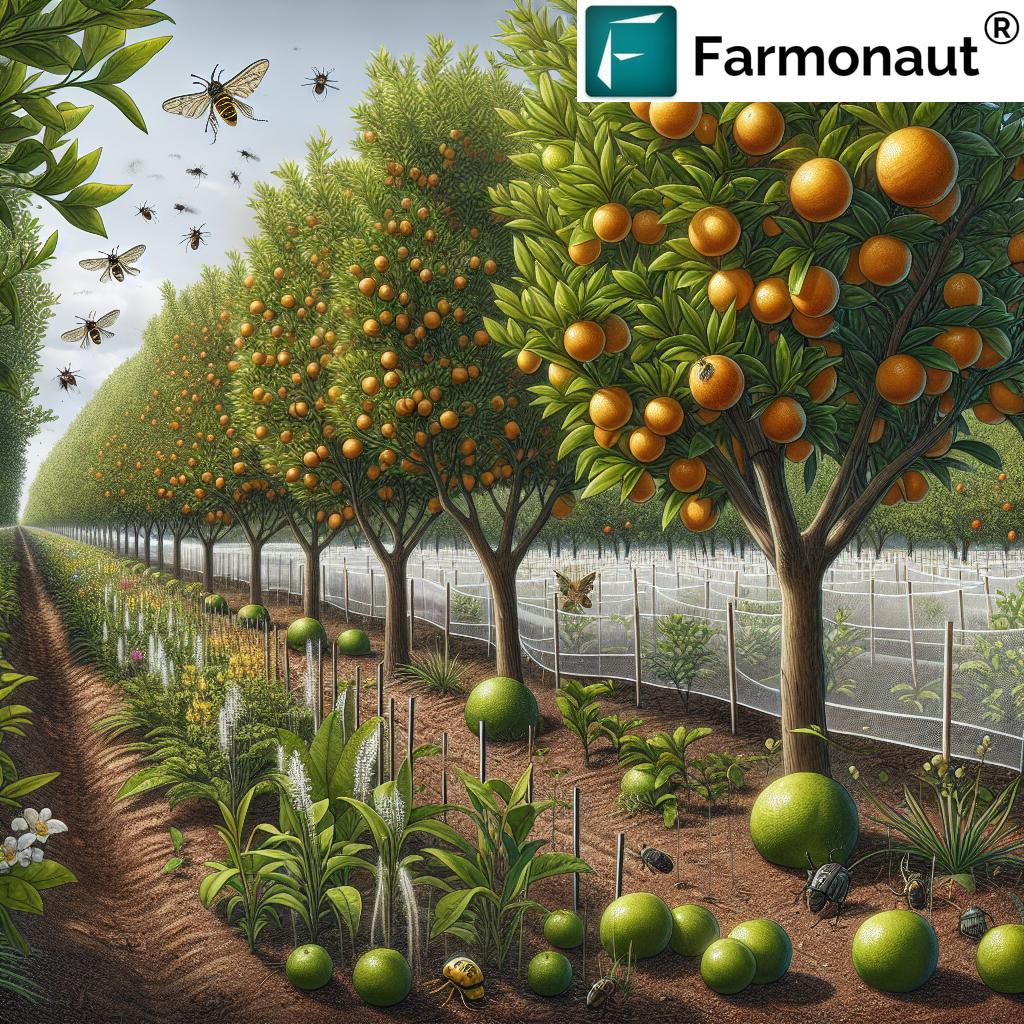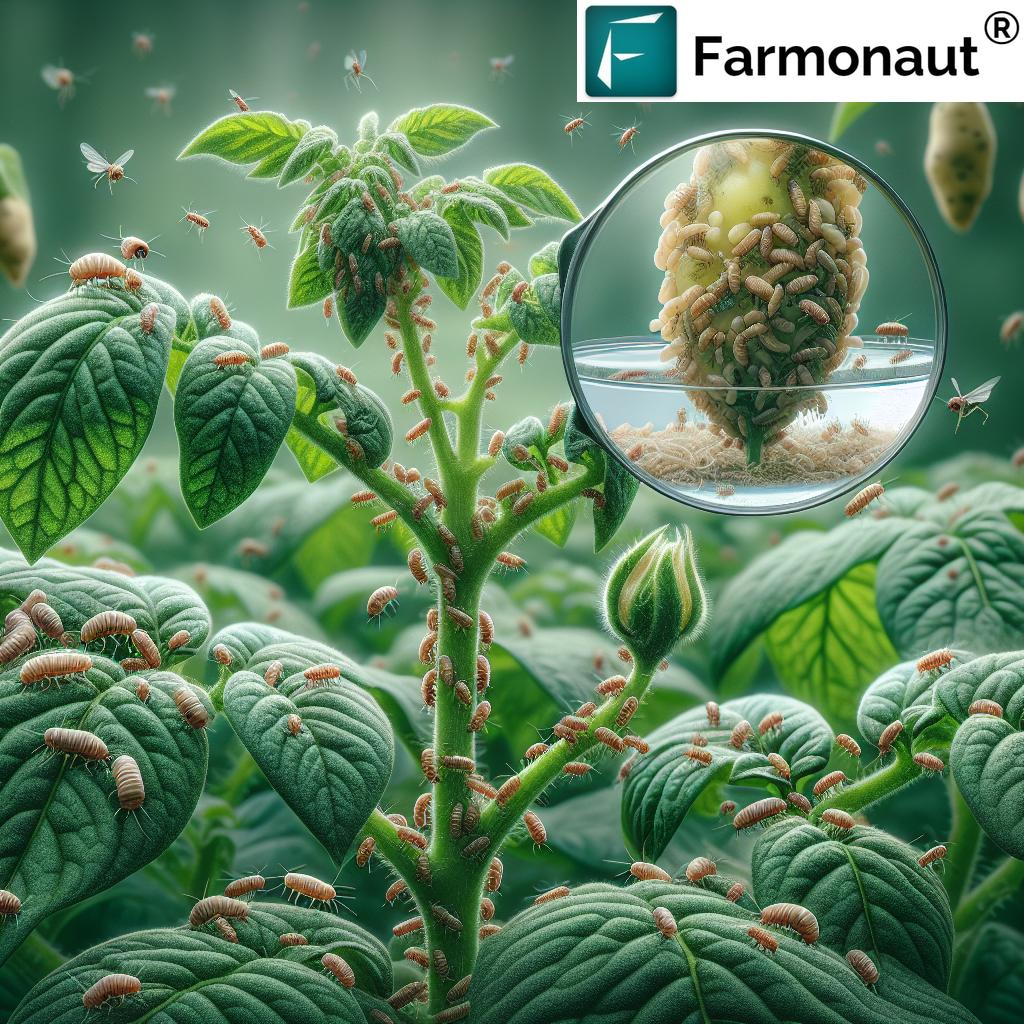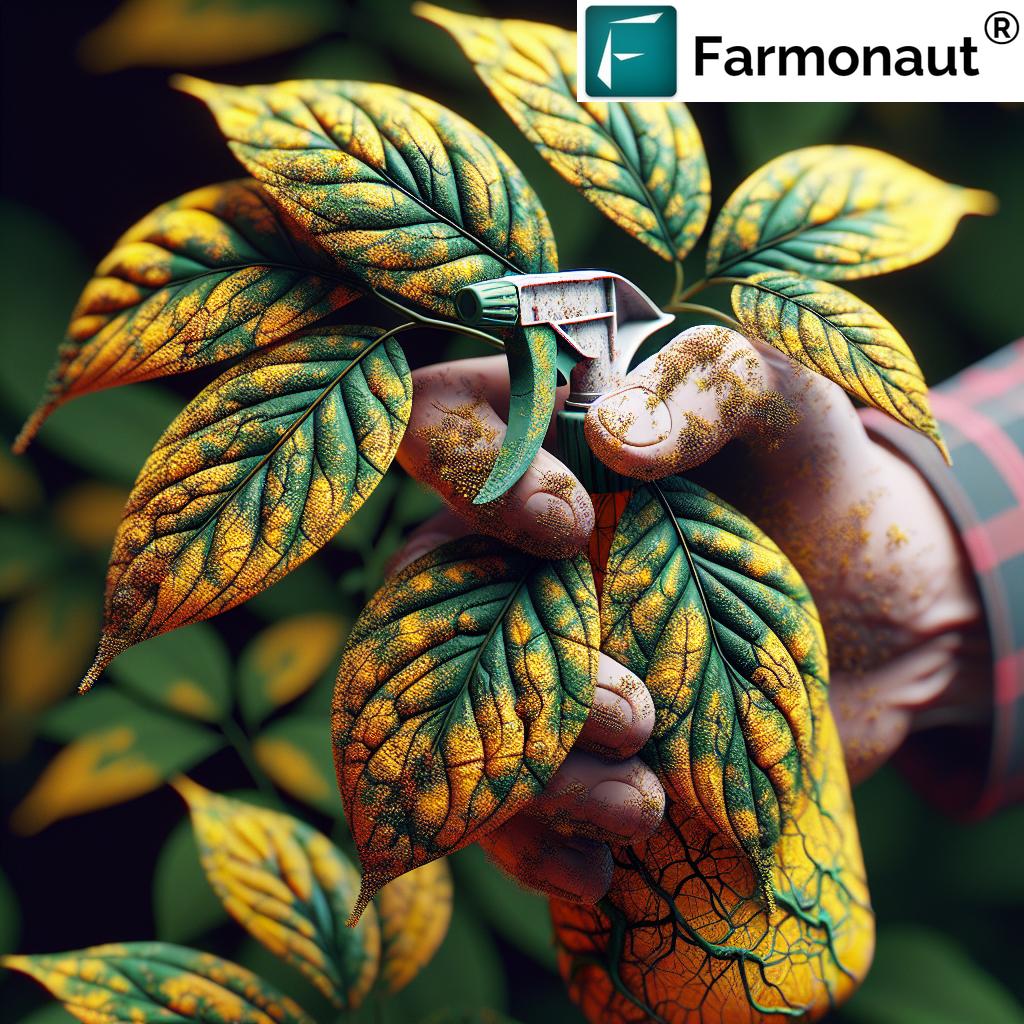7 Effective Practices for Controlling Psyllid: Cultural, Biological & Chemical Strategies for Sustainable Pest Management
Understanding Psyllids: Who Are We Up Against?
Psyllids, often referred to as plant lice or jumping plant lice, are tiny, sap-sucking insects belonging to the superfamily Psylloidea. Though small in size, their impact on agriculture, horticulture, and forestry is significant. Psyllid infestations threaten key crops, ornamental plants, and even trees by directly damaging plant tissues and facilitating the spread of dangerous diseases.
Here’s why controlling psyllid populations is vital:
- Direct Damage: Psyllid feeding results in stunted growth, curled or distorted leaves, and reduced fruit or seed yield.
- Honeydew & Sooty Mold: These insects excrete honeydew, which supports sooty mold fungi that can block photosynthesis.
- Disease Transmission: Certain psyllid species act as vectors of plant pathogens — for example, the Asian citrus psyllid carrying Candidatus Liberibacter asiaticus (causal organism of citrus greening disease), or the potato psyllid transmitting the bacterium responsible for zebra chip disease in potatoes.
The Impact of Psyllid Infestations on Agriculture, Horticulture & Forestry
Combatting psyllid infestations is a top priority in sectors like citrus cultivation, potato farming, and forestry. Unchecked, their attacks can:
- Reduce yields significantly (sometimes by 50–100% in severe outbreaks).
- Facilitate the spread of plant diseases like citrus greening (Huanglongbing), a devastating disease for citrus producers in regions such as Florida, California, and India.
- Impair tree vigor in managed and natural forests, causing dieback, stunting, or even tree mortality.
Our goal must be to deploy the most effective and sustainable psyllid control methods to protect plant health, optimize yields, and prevent catastrophic disease transmission.
7 Effective Psyllid Control Methods: A Comprehensive, Integrated Approach
Let’s dive into the leading practices for controlling psyllid populations. These techniques combine cultural, biological, and chemical methods, reinforced within the Integrated Pest Management (IPM) framework.
1. Cultural Practices for Psyllid Management
Cultural practices involve modifying the production environment and crop management strategies to make it less attractive or accessible for psyllid pests.
- Optimized Planting Strategies
Timing is critical in potato, citrus, and pear cultivation. For example, in potato farming, delaying planting by a few weeks can prevent the peak emergence of psyllid adults that transmit the zebra chip disease. This reduced incidence saves both yield and resources.
Key Phrase: psyllid disease transmission prevention - Physical Barriers
- Install UV-blocking screens, mesh row covers, and reflective mulches around your crop beds.
- These physical barriers deter psyllid adults from accessing your plants and laying eggs.
- Most effective in high-value horticulture and small-plot operations.
Key Phrase: protecting plants from psyllid damage
- Habitat & Refuges for Natural Enemies
Encouraging the natural “checks and balances” in your farm—or even urban gardens—is crucial. Strategic planting of wildflower strips, hedgerows, and the placement of artificial refuges (e.g. corrugated cardboard) supports the enemies and predators of psyllids.
Key Phrase: cultural practices for pest management
Example: In pear orchards, supporting undisturbed natural habitats nearby can increase the presence of beneficial predators and parasitoids, leading to measurable reductions in psyllid populations.
2. Biological Control of Psyllids
Biological control leverages nature’s own pest control army—natural enemies of psyllids like predators, parasitoids, and entomopathogenic fungi.
-
Predatory Insects
- Lady beetles, lacewing larvae, and predatory bugs attack and consume psyllid nymphs and adults.
- In Florida, lady beetles demonstrated consumption of up to 100% of psyllid nymphs in some trials.
-
Parasitoids
- Tamarixia radiata, a tiny wasp, lays its eggs on psyllid nymphs. The developing parasitoid larva consumes the psyllid, resulting in natural mortality.
- Strategies to conserve these beneficial organisms include reducing use of broad-spectrum insecticides and actively creating refuges.
-
Entomopathogenic Fungi
- Species such as Isaria fumosorosea and Beauveria bassiana cause disease in psyllid populations, often used as bioinsecticide sprays in controlled (greenhouse) environments.
- Fungi are particularly effective in humid conditions; their field efficacy can be boosted by selecting optimal application timing.
Integration Point: Biological controls can decrease psyllid populations by over 60% when combined with selective chemical treatments. (biological control of psyllids)
3. Chemical Control of Psyllid Populations
Chemical methods are sometimes needed, especially when pest densities threaten significant damage or disease outbreaks. However, all applications must consider resistance management and non-target impact.
Key Phrase: chemical control of psyllid populations
-
Targeted Insecticides:
- Spinosad — an insecticide compatible with organic and IPM systems, effective against both nymphs and adults.
- Horticultural oils — suffocate and damage psyllids at eggs, nymph, and even adult life stages.
- Application guidelines emphasize coverage of leaf undersides and repeat applications to catch multiple life stages.
-
Systemic Insecticides:
- Imidacloprid, thiamethoxam, and clothianidin are absorbed by plant roots and kill psyllids feeding on the plant sap.
- Systemic insecticides are especially useful for young trees or plants where routine foliar sprays are not feasible.
- Use only as a rotation with biological measures to delay resistance development and protect beneficial insects.
-
Resistance Management:
- Psyllid populations may quickly develop resistance with repeated use of the same chemical controls.
- Always rotate active ingredients and include biological or cultural controls in the pest program.
4. Integrated Pest Management for Psyllids (IPM)
Integrated Pest Management (IPM) offers a holistic, evidence-based approach combining monitoring, careful threshold-based application of insecticides, and the conservation or enhancement of natural enemies.
- Monitoring: Use yellow sticky traps and direct visual inspection to track adult psyllid densities. (Tip: Early detection and routine scouting are core to IPM and essential for psyllid disease transmission prevention.)
- Action Thresholds: Only initiate chemical treatments once populations hit a damage threshold—this varies by crop and region (check local extension bulletins).
- Selective Controls: Rely first on biological, cultural, or physical controls. Integrate chemical measures as a supplement—never the sole solution.
- Conservation: IPM frameworks aim to protect beneficial organisms, limit non-target impacts, reduce resistance, and cut costs.
Pro Tip: “Up to 80% reduction in psyllid infestations is possible with integrated pest management (IPM) practices.”
Key Phrase: integrated pest management for psyllids
5. Deploying Refuges and Landscape Management
Encouraging biodiversity and habitat management creates a more stable ecosystem, where psyllid enemies can thrive.
- Install artificial refuges: Use corrugated cardboard, bamboo bundles, or wood blocks in orchards to provide homes for predators and parasitoids.
- Plant natural refuges: Native hedgerows and wildflower strips attract and feed beneficial insects all year.
- Reduce excessive tillage: Practices that maintain ground cover preserve habitat and reduce pest “explosions” after soil disturbance.
Key Phrase: natural enemies of psyllids
6. Psyllid-Resistant Crops and Varietal Selection
Introducing or selecting crop varieties less preferred by psyllid species—or less susceptible to disease transmission—adds a valuable layer of defense.
- Genetic resistance: Some crop cultivars feature leaf waxiness, surface hairiness, or biochemical profiles deterring psyllid feeding or oviposition.
- Crop rotation & companion planting: Alternating susceptible crops with resistant ones, or interplanting, may disrupt psyllid lifecycles and reduce infestation rates.
- Developments: Breeding programs continue to pursue psyllid resistant crops for both yield and pest management gains.
Key Phrase: psyllid resistant crops
7. Regular Monitoring and Rapid Response
Constant vigilance enables early intervention. Frequent scouting and monitoring of psyllid eggs, nymphs, and population buildup empower timely action.
- Yellow sticky traps and weekly field walks help track pest densities and prevent sudden explosions.
- Mobile or satellite-based crop monitoring technology (like Farmonaut’s systems) can pinpoint “hot spots” before visible signs appear.
- When thresholds are approached, deploy targeted control strategies (biological, cultural, or chemical) to suppress psyllid populations and protect yields.
Key Phrase: how to manage psyllid infestations
Comparative Effectiveness Table: Psyllid Control Methods
| Control Practice | Description | Estimated Effectiveness (%) | Application Method | Frequency | Pros | Cons |
|---|---|---|---|---|---|---|
| Cultural Strategies (Planting, Barriers, Refuges) | Alter planting dates, use physical barriers (screens, covers, mulches), habitat management | 30–60% | Manual/physical modifications, land management | Seasonal, based on crop cycle | Reduces reliance on chemicals, supports natural enemies, preventive | Labour intensive, variable efficacy, less effective in high-pressure outbreaks |
| Biological Control (Predators, Parasitoids, Fungi) | Utilizes lady beetles, Tamarixia radiata, lacewings, entomopathogenic fungi | 40–65% (higher with integration) | Conservation, augmentation, or periodic releases | Regular monitoring, seasonal | Environment-friendly, sustainable, targets only pests | Sensitive to chemicals/environment, may act slower than chemicals |
| Chemical Control (Conventional & Organic) | Application of insecticides (spinosad, oils, systemic compounds) | 65–95% (when timed and rotated) | Spray/soil application (per label) | Threshold based, up to 3–5 times per season | Rapid action, high reduction of populations | Resistance risk, impacts beneficials, regulatory limits |
| Integrated Pest Management (IPM) | Combines methods: monitoring, thresholds, selective controls | Up to 80% | Comprehensive pest management plan | Continuous | Cost effective, reduces resistance, protects beneficials | Requires expertise, timely execution, training |
| Refuges/Landscape Management | Artificial and natural refuges to boost predator/parasitoid survival | Up to 55–60% | Habitat installation/enhancement | Ongoing, annual improvement | Enhances biodiversity, self-sustaining | Slow build-up, needs planning |
| Resistant Varieties/Crop Selection | Use of plant varieties/rotations discouraging psyllid colonization | 20–50% | Seed/crop selection prior to planting | Seasonal | Preemptive, low input, sustainable | Limited by availability, local adaptation |
| Scouting/Monitoring (Rapid Response) | Routine use of traps, visual surveys, tech-enabled detection | Up to 35% (prevents outbreaks) | Manual, traps, remote sensing tools | Weekly or bi-weekly | Early warning, optimizes other controls, data driven | Labor/time, not directly suppressive |
How Farmonaut Empowers Pest Management with Data-driven Insights
At Farmonaut, we recognize that modern pest management is all about timely, actionable insights. Our mission is to provide affordable, accessible precision agriculture for growers worldwide, using cutting-edge technology that empowers the most sustainable and effective psyllid control methods.
Farmonaut’s Key Features for Psyllid/Pest Management:
- Satellite-Based Crop Health Monitoring – Our platform gives real-time NDVI and soil moisture maps, allowing growers to detect early signs of infestations or plant stress before symptoms are visible. This enables precision in spraying and smarter pest management while optimizing resources and reducing chemical usage.
- AI-powered Jeevn Advisory System – Receive personalized, timely alerts about probable pest outbreaks, weather-based risks, and best-practice IPM for specific crop stages and local conditions.
- Blockchain Traceability Solutions – For those seeking trust and transparency in supply chains, our product traceability platform guarantees every stage from farm to market is digitally verified, supporting disease-free, high-quality produce.
- Resource/Operation Optimization – Farms and agribusinesses can track machinery and manage fleets efficiently (see Fleet Management), lowering operational costs and securing safer operations during pest control activities.
- Carbon Footprinting – For enterprises focused on environmental responsibility, our carbon footprinting module enables tracking of pesticide, fertilizer, and machinery impacts—key for those aiming to balance disease control with sustainability.
- API-Driven Integration – Want to supercharge your apps or platforms with these insights? Use our Farmonaut API or explore seamless integration via our Developer Docs.
Farmonaut’s precision tools benefit everyone:
- Smallholders make timely, informed choices—reducing losses from psyllid damage.
- Agribusinesses optimize large-scale pest management and meet traceability requirements.
- Financial institutions use satellite-based verification for crop loan and insurance claims—reducing fraud and supporting more secure financing.
- Governments and NGOs run scalable, cost-effective monitoring and early warning programs for regional pest or disease threats.
Get started today: Explore the Farmonaut Platform or reach us through our app/web for a demo. Precision farming—made simple and affordable!
Ready to subscribe?
Enjoy flexible subscription options across our platform for individual farmers, agri-enterprises, and governments. Scale your precision farming tools as you grow.
FAQs: Effective Practices for Controlling Psyllid
-
Q1: What are the main signs of psyllid infestations?
Look for leaf curling, yellowing, or stunted growth. Honeydew excretion leads to sooty mold on leaves, and you may notice clusters of small, oval eggs or jumping adult insects. Specific diseases (like citrus greening or zebra chip in potatoes) are telltale signs.
-
Q2: Are all psyllid species equally harmful?
No, damage varies by species and host plant. Some are harmless, but vectors like the Asian citrus psyllid and potato psyllid are major threats due to disease transmission.
-
Q3: Is it enough to use only chemical insecticides against psyllids?
No—overreliance on chemicals increases resistance, harms beneficial organisms, and can cause secondary pest outbreaks. Always follow integrated pest management principles.
-
Q4: What’s the difference between predators and parasitoids in psyllid management?
Predators (like lady beetles, lacewings) eat psyllid eggs, nymphs, or adults. Parasitoids (like Tamarixia radiata) lay eggs on/inside psyllids—their larvae consume and kill the pest.
-
Q5: How often should I monitor for psyllids?
At least once weekly during the growing season, and during known periods of pest activity, use sticky traps and/or Farmonaut’s satellite-based crop monitoring for best results.
-
Q6: Can cultural measures help with psyllid resistance management?
Absolutely. Crop rotation, timing, and habitat enhancement can all delay resistance and maintain effective pest suppression with less chemical input.
-
Q7: What’s the best way to start a psyllid management program?
Implement regular scouting, build up natural enemy populations, apply barriers, and consult data-driven platforms like Farmonaut for site-specific management advice.
Conclusion: Building Sustainable Psyllid Management
Managing psyllid populations in agriculture, horticulture, and forestry requires a comprehensive, integrated approach. No single method delivers sustainable results; rather, it’s the synergy of cultural, biological, and chemical controls—reinforced by advanced IPM monitoring and decision support—that helps us reduce infestations, protect plant health, and minimize crop losses.
As precision agriculture technology like Farmonaut becomes more accessible, growers can monitor field risk in real time and adapt quickly—saving costs, conserving beneficials, and producing healthier crops and trees for the future.
Start your journey towards smarter, more sustainable pest management today! Explore Farmonaut’s crop health platform and discover how actionable data can transform your strategy for controlling psyllids and other pests.


















